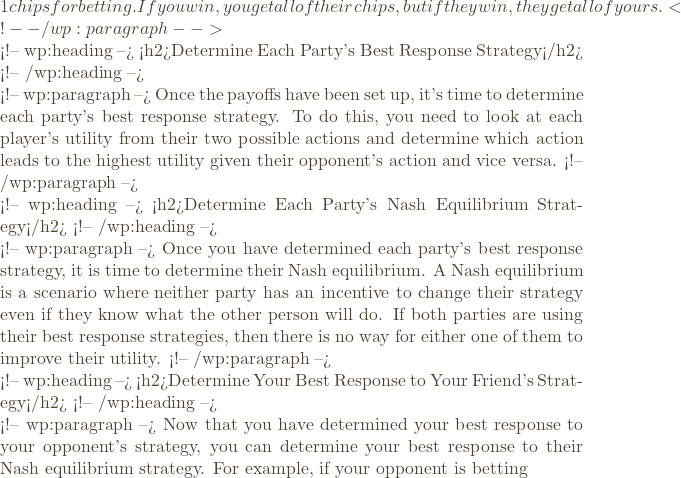Why Game Theory?
Understanding the intricacies of finance can be overwhelming. It’s easy to get lost in all the different terminology, investing strategies and financial instruments. However, understanding how these different topics interact and how they can be used to your advantage is essential if you want to become a successful investor. The financial theory is an often misunderstood topic. Understanding even the most basic financial theory can seem like an insurmountable mountain when you’re just starting. Fortunately, it doesn’t have to be that way if you follow a few simple rules and techniques. The concepts may seem complicated at first glance, but once you break them down into their individual parts, they become much easier to understand. Here is all you need to know about determining the Nash Equilibrium.
What is Nash Equilibrium?
Nash Equilibrium is a concept from game theory. John Nash developed this concept. It describes a situation where neither party in a transaction has any incentive to change their current strategy. Nash developed thiss concept in the 1950s. Since then it has been used in economics. The Nash Equilibrium is named after John Nash, the subject of the book and subsequent movie, A Beautiful Mind.
How to Determine the Nash Equilibrium
Define Your Payoff Matrix
The first step to determining Nash Equilibrium is to define a payoff matrix. The payoff matrix is a table showing the parties’ possible outcomes in a transaction. The payoffs are defined by each party’s preferences and what they want from the transaction. For example, let’s say you are playing poker with your friend, and the two of you are using  2 and that leads to a Nash equilibrium, then you should bet
2 and that leads to a Nash equilibrium, then you should bet ![]() 2. In this case, you should bet the same amount as them and hope for the best. If you were playing against yourself, it would be very easy because both of you would use the same strategy. However, in this case, two people are playing, so they will use different strategies.
2. In this case, you should bet the same amount as them and hope for the best. If you were playing against yourself, it would be very easy because both of you would use the same strategy. However, in this case, two people are playing, so they will use different strategies.
Determine Whether You Should Bet or Fold
Now that you have determined each scenario and how each party should act given their opponent’s strategy, it is time to work out whether or not you should bet or fold in each scenario. This means looking at all possible outcomes and using basic game theory principles such as minimax regret with a tie-breaker and maximin expected utility (MEEU) to determine which option will lead to the highest utility for each player. This method can determine whether or not your opponent is bluffing.
Conclusion
In every market, players will want to take advantage of the others. If they can, the others will try to find ways to take advantage of them in turn. If a player finds another who is being taken advantage of, that player may be able to exploit that other in return. You must understand how to use the Nash equilibrium in your finances.

